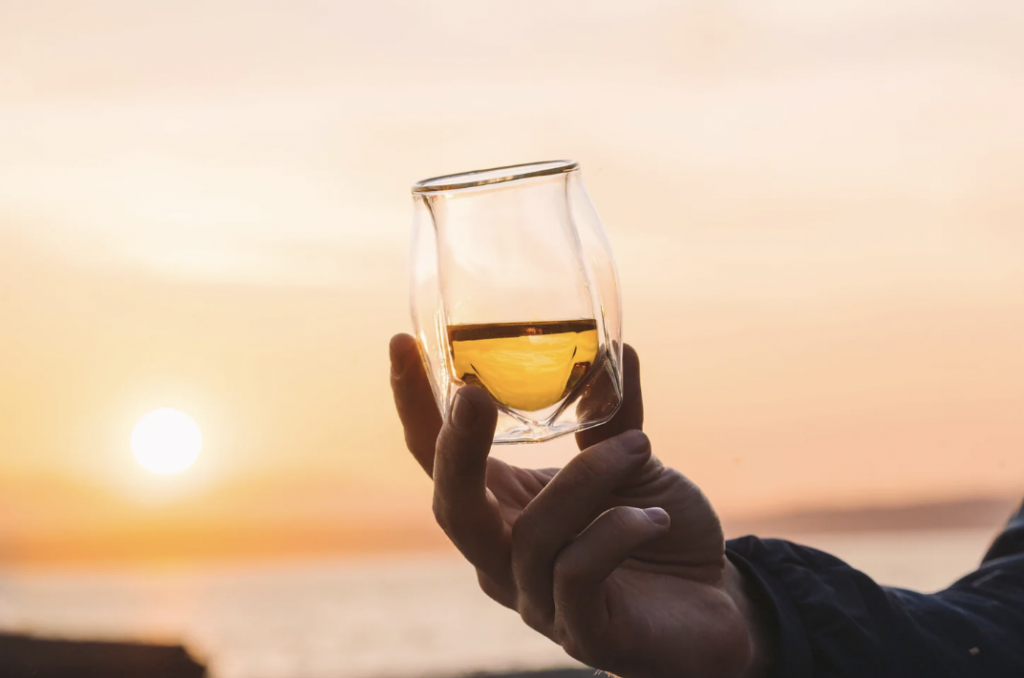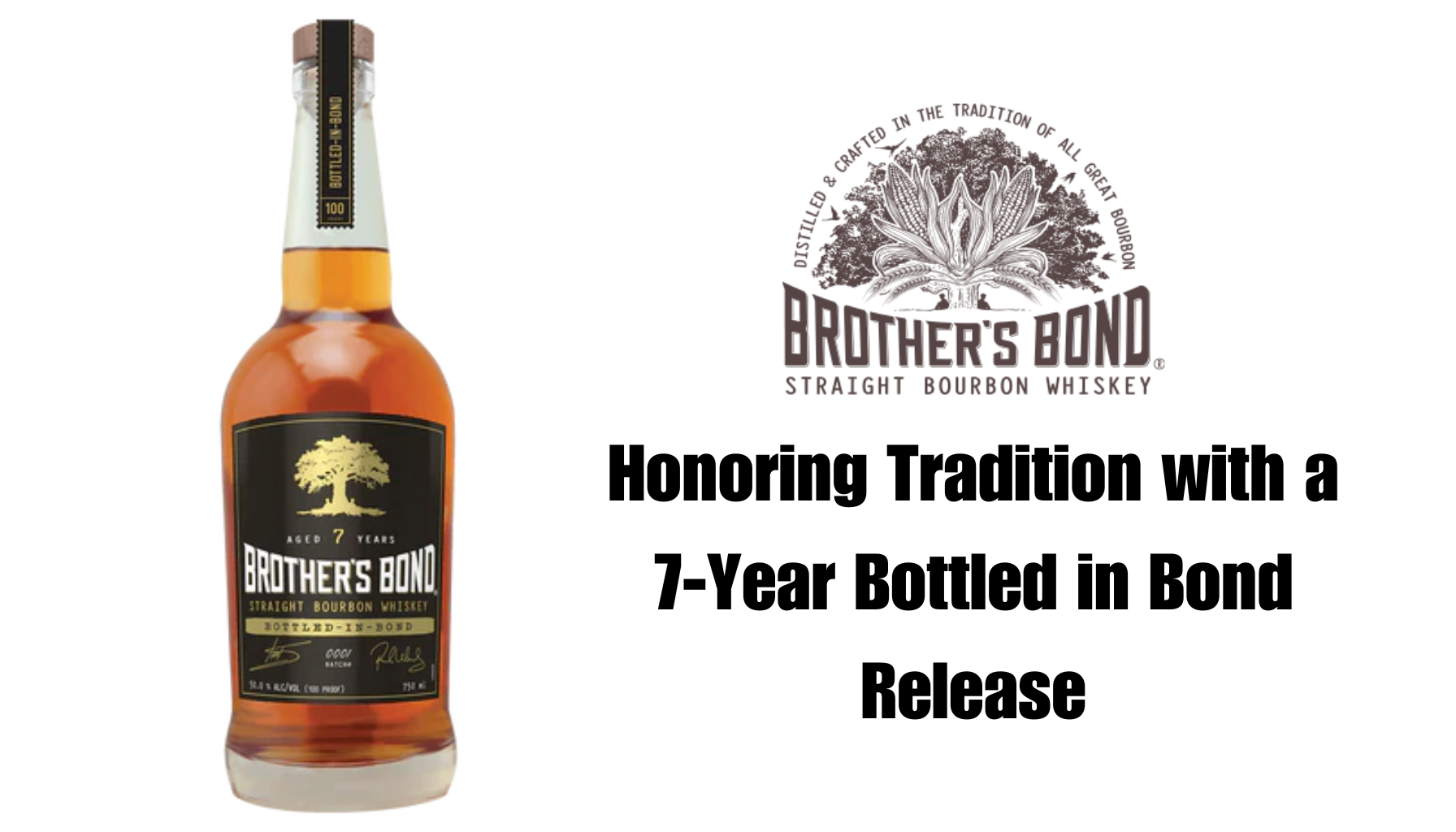Step 1: Choose the Right Glass—It Matters!

Now, the first step to tasting whiskey properly… If you think any glass will do, think again. The type of glass you use has a huge impact on your whiskey experience. Ideally, grab a tulip-shaped glass (like the Glencairn) that’s designed to capture aromas and focus them right toward your nose. If you don’t have one on hand, a standard tumbler works too—but trust me, the right glass enhances every sip.
The wide base lets the whiskey “breathe,” while the narrow top intensifies its aromas. And believe me, whiskey’s aroma is half the experience.
Step 2: Pour, Swirl, and Take in the Color

Here’s where things get interesting. Pour yourself a small amount—just an ounce or two—and take a moment to admire the color. Whiskey isn’t just brown; it’s a full spectrum of golds, ambers, and mahogany hues.
Did you know the color can give you hints about its age and how it’s been aged?
- Light Gold? You’re probably sipping a younger whiskey.
- Richer Amber? This baby’s been resting in oak barrels a bit longer, likely seasoned in bourbon or sherry casks.
- Deep Brown? This one’s seen some serious time, perhaps even aging in heavily charred barrels.
Every whiskey tells a story through its color, so take a moment to admire it before moving on.
Step 3: Engage Your Nose—The Secret Weapon
Believe it or not, your nose is even more important than your taste buds when it comes to whiskey. Smell is where you’ll find the complexity and subtlety that might escape your palate. Bring the glass slowly up to your nose, taking slow, deliberate breaths. But here’s the trick—keep your mouth slightly open while you do it. This will help you fully capture the scent and avoid getting overwhelmed by the alcohol.
What do you smell? Sweet notes of vanilla or caramel? Maybe something fruity, like apple or cherry? Or perhaps spices—cinnamon, nutmeg, or pepper. Take a second whiff after swirling the whiskey a bit more in the glass. You might be surprised to find new layers of scent emerging.
Step 4: The First Sip—Let It Dance on Your Tongue
Here’s where the magic really begins. Take a small sip, but resist the urge to swallow right away. Let the whiskey coat your tongue and roll around your mouth. Notice how it changes. The front of your tongue will pick up sweeter flavors—maybe honey or fruit. As the whiskey moves, you’ll start to sense spicier, smoky, or oaky notes at the back.
Pay attention to the mouthfeel too. Is it light and crisp? Or does it have a richer, more oily texture? Whiskey isn’t just about taste, it’s an entire mouth experience.
Step 5: The Finish—What Lingers?
The finish is what happens after you swallow. Does the flavor disappear quickly, or does it leave a lingering warmth and richness? A long, smooth finish is often a sign of a well-aged whiskey, and you might notice flavors you didn’t pick up during the initial sip. Maybe there’s a smoky, peaty aftertaste, or a hint of dark chocolate or espresso that emerges late.
Step 6: A Splash of Water—Unlock Hidden Depths

Here’s a pro tip that might surprise you: adding a few drops of water to your whiskey can completely transform it. Water helps to “open up” the whiskey, releasing aromas and flavors that may have been hiding behind the alcohol’s intensity. You don’t need much—just a few drops can make a world of difference.
This is especially helpful with cask-strength whiskey, which can pack a stronger punch. Give it a try—you might find that a few drops of water reveal subtle vanilla or fruit flavors that were masked by the alcohol.
Step 7: Pair It Up—Enhance the Experience

Want to take things to the next level? Try pairing your whiskey with food. Dark chocolate, sharp cheeses, smoked meats, or even nuts can enhance the flavors in your whiskey. Each bite will play off different notes in your glass, creating a whole new experience with every sip.
But before you dive into pairings, always taste the whiskey on its own first to appreciate its unique character.
Step 8: Practice Makes Perfect
The more whiskey you taste, the better your palate becomes at identifying subtle flavors and textures. Try a variety—single malt Scotch, bourbon, rye, or even Irish whiskey. Each offers its own distinct profile, and over time, you’ll discover what suits your taste best. It’s a journey, and the more you practice, the more layers of complexity you’ll uncover in each glass.
Final Thoughts
Whiskey tasting is about slowing down and enjoying the moment. It’s not just about drinking; it’s about exploring. From the first look to the last lingering note, each step in the tasting process uncovers something new. So next time you pour yourself a glass, engage your senses, follow these steps, and savor the experience. You’ll find yourself not just drinking whiskey but truly understanding and appreciating it.
🥃 Cheers to your next glass, and happy tasting!
Want to Read More? or Start drinking?




